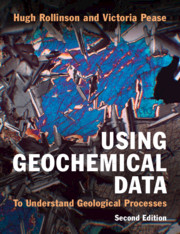The varied mineralogical composition of earthy materials and the quantity of elements extracted by simulated stomach acid substantiate the diversity of materials consumed by humans practicing geophagy. Direct consumption of ‘edible earths’ for medicinal and spiritual purposes occurs worldwide and is deeply rooted in ‘folk medicine’ and religion. The legends associated with the healing powers of the clay from Chimayo, New Mexico, provide an excellent example of the roots of geophagy. The clay mineral assemblages revealed by X-ray diffraction analysis of 22 samples from New Mexico, North America, and other parts of the world are highly variable. One might be monominerallic kaolinite or smectite, and another, a complex mixture of illite, kaolinite, smectite, and chlorite or vermiculite. The quantities of elements (Al, Si, K, Na, Ca, Mg, Fe, Mn, Ti, P, S, Ba, Sr, Pb, Zn, Cd, Co, Cu, Cr, Ni, V, Zr, Se, Mo, Be, Sb, and As) extracted by 0.12 M HCl varied from ∼1.0 mg/g to the limit of detectability, 0.0001 mg/g. Potential long-term human health effects were evaluated with the Reference Dose Ratio (RDR). It divides the quantity of the element extracted from 50 g of the total sample by the recommended reference dose (RfD) reported in the Environmental Protection Agency’s (EPA, USA) IRIS (Integrated Risk Information System) database. Median RDR values for Na, Cr, Sb, and As exceeded 1.0 indicating an abnormally high potential intake. Materials consumed by humans are so varied that caution should be used in comparing the results of one clay study with those of another without mineralogical and chemical data.


